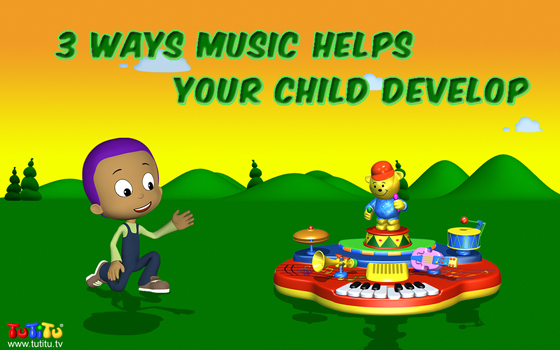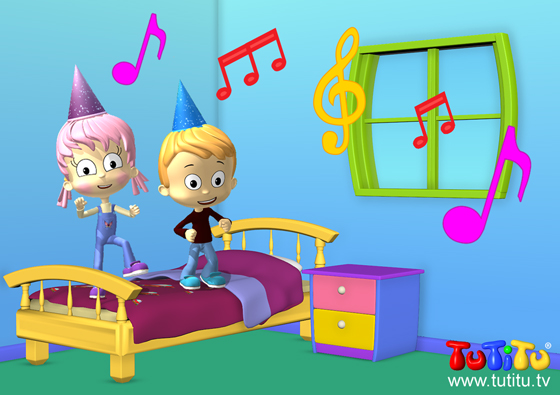Everyone knows that music is an essential part of childhood. Across countries, continents and cultures, all children seem to have a similar interest in rhythm and melody since day one. In fact, babies are born ready for music, equipped with the ability to perceive a multitude of sounds, some of which adults can’t even perceive.
Babies are even born with taste: one study showed that infants as young as six months preferred listening to consonance over dissonance (tested with a Mozart piece, in case you were wondering.) This is the same preference you would see in most adults – we as human beings are attracted to harmonic, ‘stable’ compositions – which goes to show how wired we are to music since birth.
What is becoming increasingly evident is that there is much more to music and the developing brain than just pure enjoyment, and that music can contribute a lot to your toddler’s physical, emotional/cognitive and social development. Integrating songs (you can see some of our musical videos for kids right here) into your toddler’s daily life can mean a great deal to them, and we’ve collected a few reasons why.
Moving on up
Swaying around to music can help young children develop their motor skills. Dancing is known to be beneficial to hand-eye coordination and muscle strengthening, and it can help the child practice abilities through specific ‘moves’ such as hopping, skipping and balancing on one leg.
Another important effect of dance is that it helps the toddler develop a critical sense called proprioception: the ability to know where one’s body is in space. We tend to take it for granted, but there’s nothing obvious about being able to walk without constantly watching our own feet, for instance.
Dancing can help your child’s proprioception immensely. Even a simple routine requires the child to be aware of their body and notice where their arms and legs are and the position of their joints. The more they practice the sharper their instincts and grasp will become, and it certainly can’t hurt to practice in such a fun way.
Feelin’ Groovy
Emotional intelligence and cognitive abilities are also an important part of a child’s development. As it turns out, music can come in handy in these areas as well. Music stimulates the brain and encourages abstract thinking. Its use of patterns, both in melody and in rhythm, further helps the child develop memory skills.
Additionally, music and dance can help your kids express themselves. Listening to music and interacting with it are creative experiences, and the range of emotions and moods in different songs can be used as a potent outlet for self-expression. The connection we adults have to music is obviously a more complex one than is possible in earlier ages, but sometimes simplicity does the trick. Exposing children to a range of musical expressions of moods and emotions and letting them dance to the songs might help the children connect to what they themselves are feeling.
Making Friends
Finally, music can even help with the development of social and communicative skills. Perhaps the more obvious aspect of this is language: songs help toddlers learn new words as well as sentence structure. Try watching some of our music videos for kids and see which words they pick up!
Of course, language is only part of the deal. Music activities can help the toddler interact with other children in a group if he or she are shy or have special needs that might prevent them from wanting to join in with more structured activities.
Dancing in particular also helps improve toddlers’ interaction with others thanks to the need to synchronize movements and cooperate with the person in front of them. Dancing with other children or even with a parent can teach them a lot about how to be attentive to what the other person is doing.
***
Music is an important part of our lives as adults and it helps us express ourselves in various ways. Developing musical appreciation in your child is in itself a worthwhile goal – just think about everything you gain from listening to your favorite artist. Now that you know all about music’s additional benefits, all that’s left is to put on some tunes and sway together!


